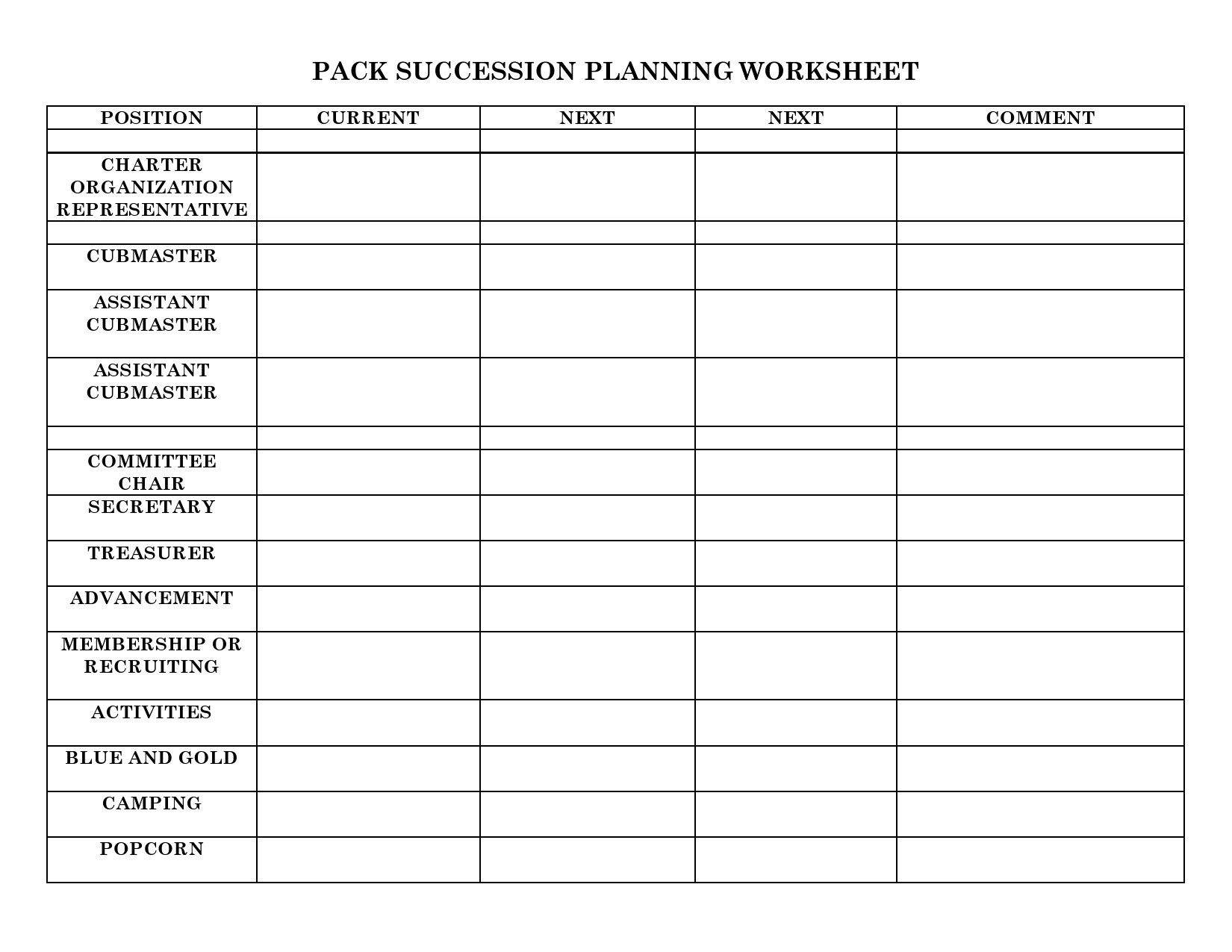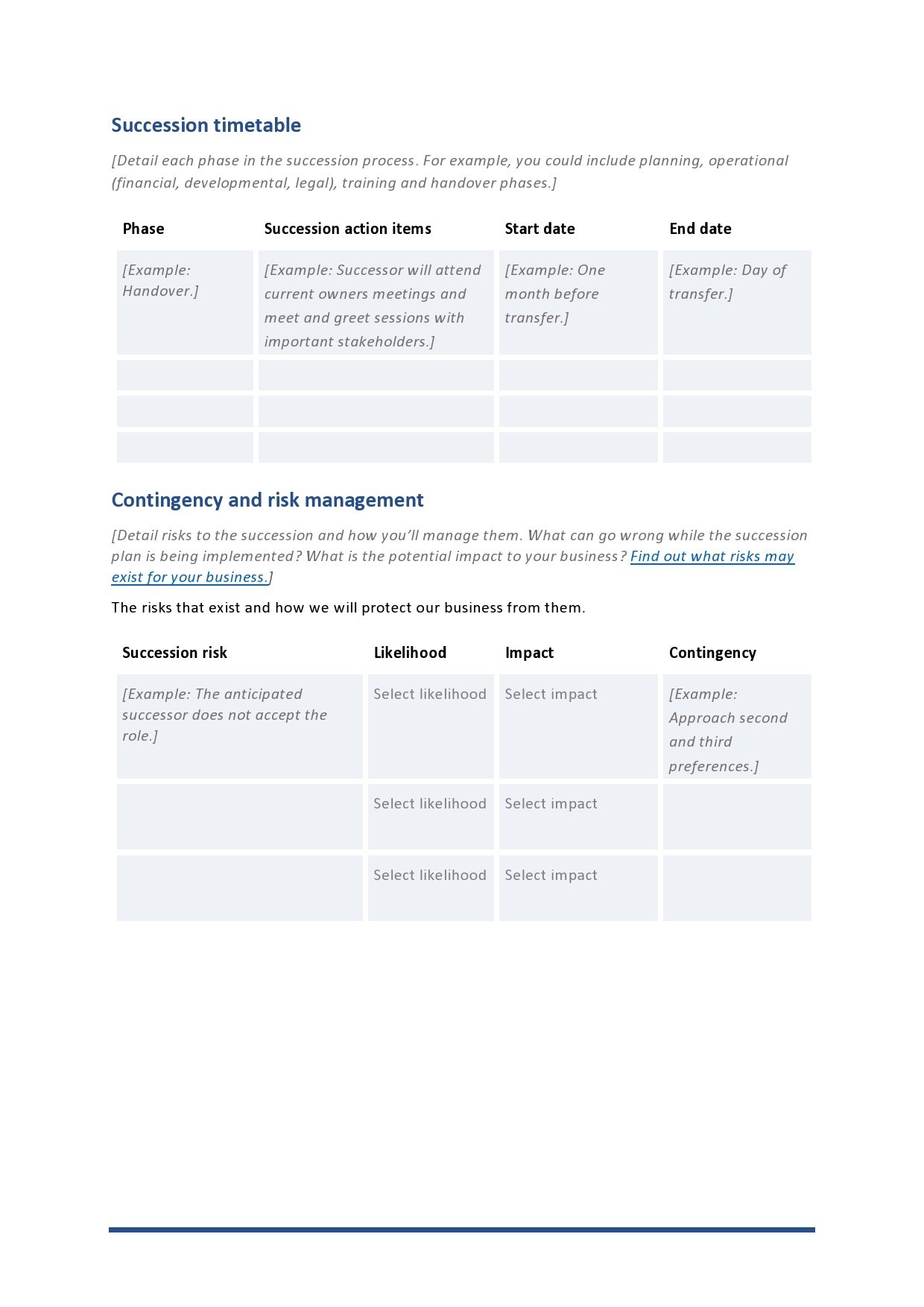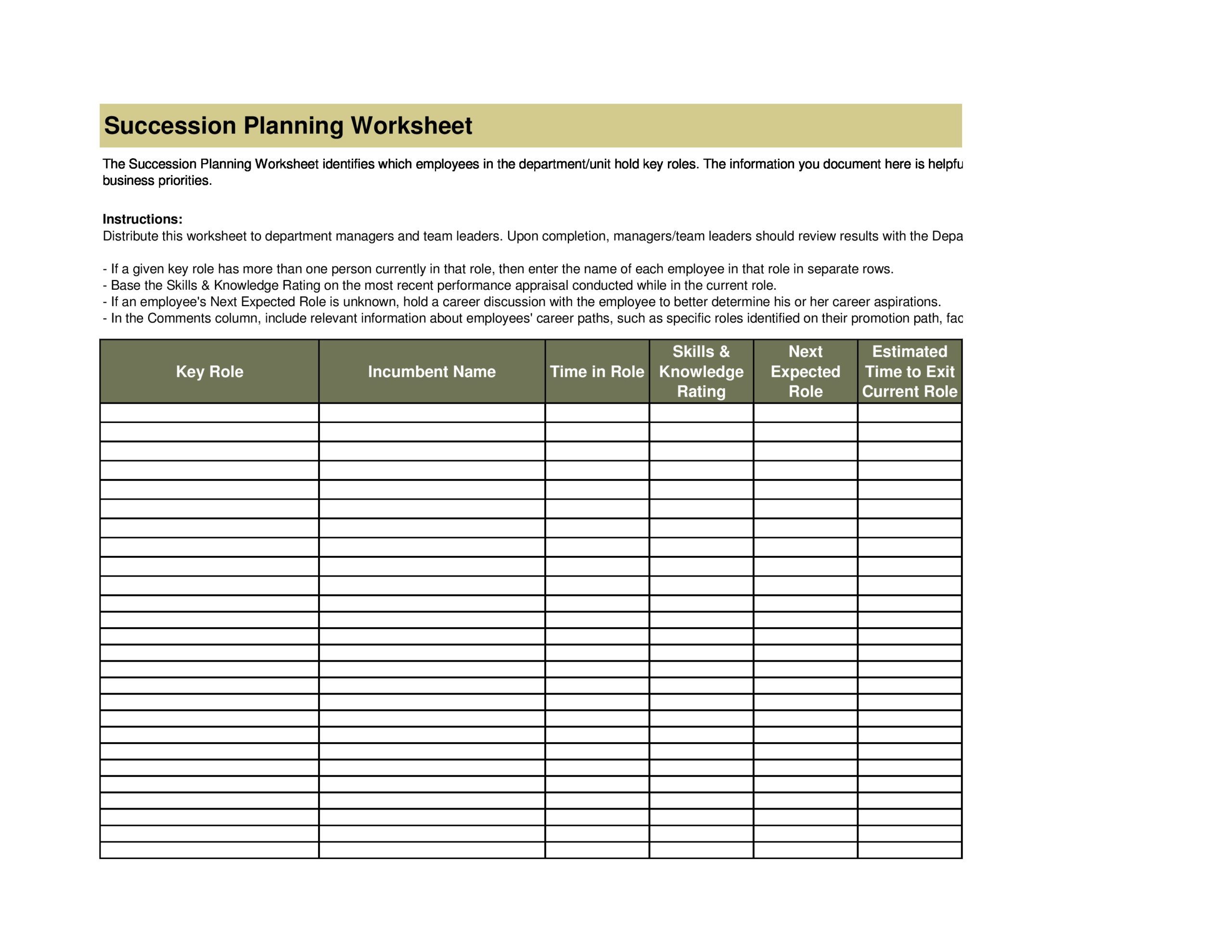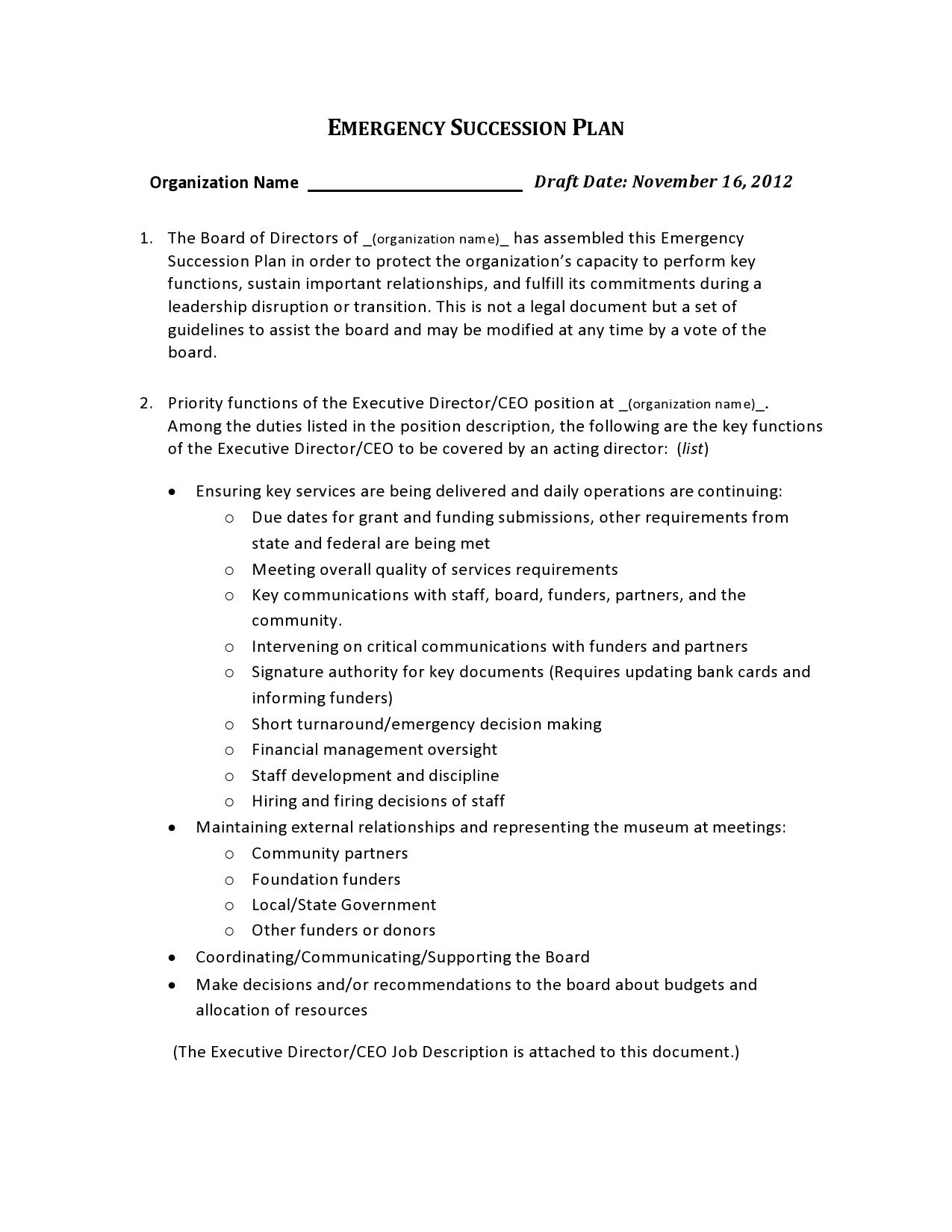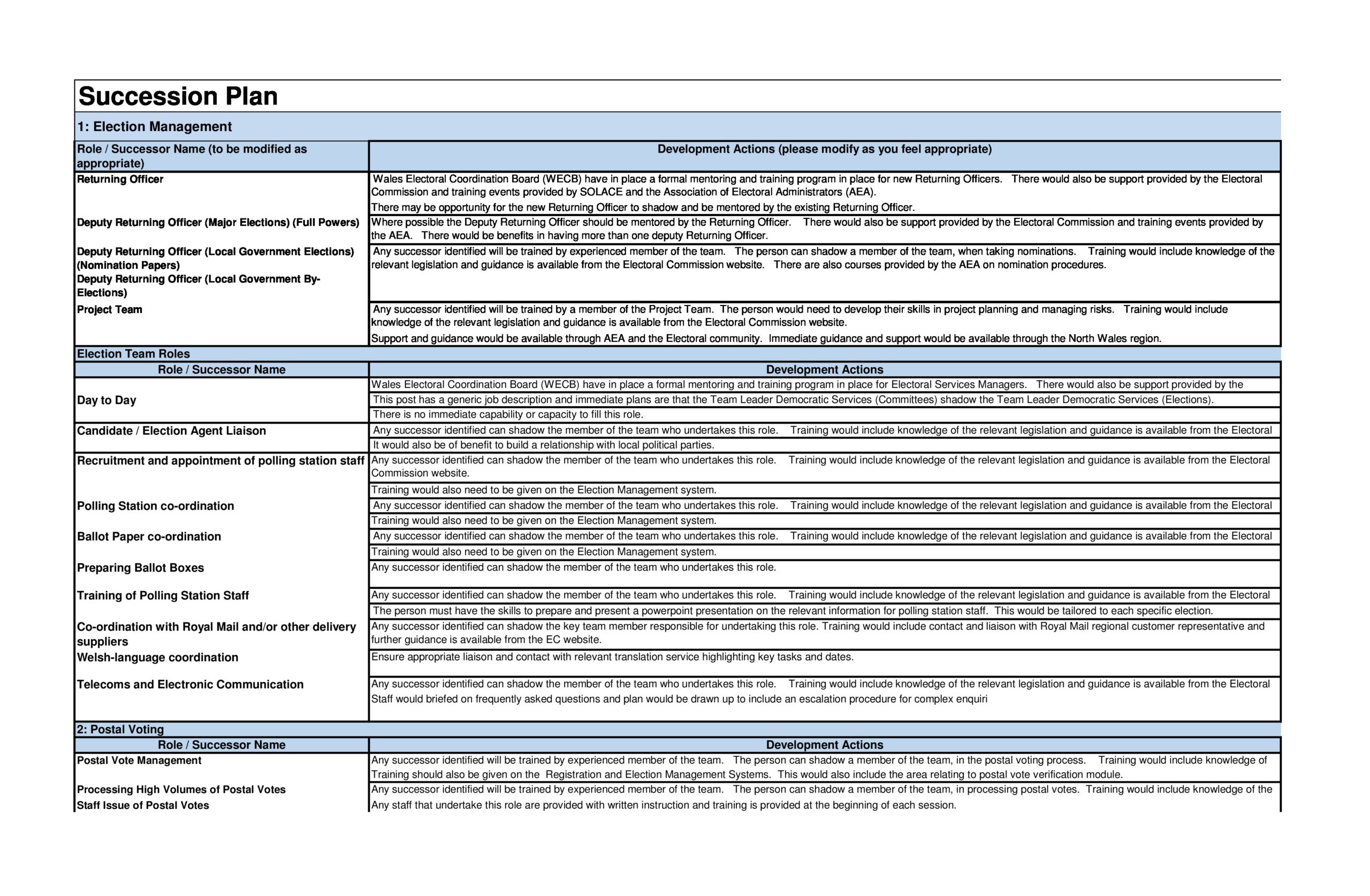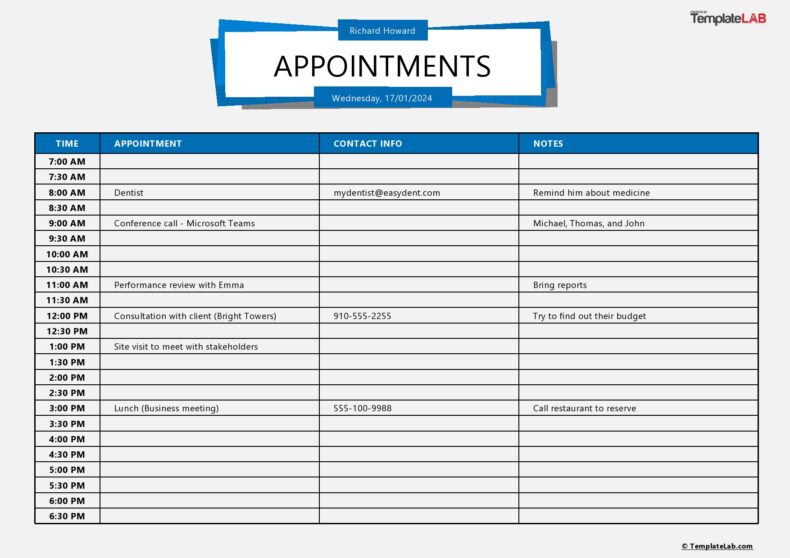As the owner, manager, or someone who holds a high position in your company, you should constantly watch the performance of your employees. This allows you to identify high-potential workers who deserve a key managerial position in case a position opens up. They are trained and involved in key-decision making as the first-step towards their advancement. To ensure this entire process runs systematically, you need an effective succession planning template.
Table of Contents
Succession Planning Templates
What is a succession planning system?
There are a number of stages involved in creating a succession planning template. These include the identification of key roles and business challenges in the future, the evaluation and selection of employees based on critical competencies, and the preparation of employees to fill positions in the future.
When creating a business succession plan template for your succession planning system, here are some steps to consider:
- Strategy
It makes sense to connect succession planning to create a succession planning outline. With a good strategy, you can:
Define your future goals and challenges. This provides you with information about the roles you needed to move forward.
Identify the negative effects on your company because of the absence of key positions. This helps clarify the competency knowledge and skills critical to the continuity of your business.
Open an opportunity to engage your senior leaders in the process to help your staff understand their roles.
Keep track of key positions that might become vacant. Doing this helps you create a more specific succession timeline. - Candidates
Come up with a list of candidates based on their potential for leadership roles. The selection process should be completely fair and based on a standardized process for evaluation and criteria relevant to critical competencies along with each employee’s potential in the future.
After making this list, you can start making plans for training to fit the competencies that each candidate should develop. You may have to adjust the workloads or schedules of some candidates to accommodate their development opportunities.
There is also a possibility that one of the candidates might already have the qualifications to fill the position that isn’t vacant yet without having to undergo further training, certification, or education. In such a case, you should keep these employees so you don’t potential leader for another company. - Progress
You should review and update your plans regularly to monitor your progress and meet your milestones. It’s recommended to create a timeline that will fit with your upcoming vacancies and strategic plans. This should also include contingencies in case an unexpected transition happens.
Succession Plan Examples
What is the first step in succession planning?
Succession planning is a strategy used to identify then develop future leaders in your company at all levels. Using a succession planning template can help your business with any type of contingency by preparing your employees for potential advancement. Here are the steps in this process:
- Identifying the key positions in your company both existing and in the future
The first step in succession planning is to identify the key groups or positions in your company, both existing and in the future. You should focus on identifying the positions, not the candidates. - Listing all of the competencies
All positions require a particular set of abilities, knowledge, and skills. You should find those employees who are perfectly suited for the roles and make a list. One way to list these competencies is by reviewing relevant job descriptions and merit criteria then interviewing former and current job incumbents. - Identifying the potential candidates
Succession planning helps candidates who show great enthusiasm to develop the requisite skills for a specific position. A good succession plan example includes mentoring the candidates before the formal recruitment process – as soon as the position opens up. - Creating development plans
When you have the list of relevant candidates for the role in your board succession planning template, you have to make sure that the employees on the list gain access to learning tools and development opportunities. Modern succession planning is generally based on mentoring and educating potential candidates.
Business Succession Plan Templates
Why do you need a succession planning template?
Having a succession planning template helps you identify critical roles in your company then train employees to fill those roles. This will “future-proof” your company and direct the engagement of your employees towards professional development.
By creating a business succession plan template, you will identify and develop your internal talent to prepare them to fill the existing roles in your company and the new roles that you will need as your company grows. Although effective succession planning is an area that everybody knows is important, very few companies implement it.
Usually, as a company grows, it becomes more difficult to engage driven and committed leaders to consider getting replaced. It is also because this process can feel far more complicated than it really is. But you should really consider creating a succession planning worksheet to gain the following benefits:
- Talent retention
This involves engaging your best employees with a plan for their future at your company then offering the development and training they need to hone their experience, leadership skills, and knowledge. This makes them less likely to get pirated by other companies who see their potential. - Future-proofed company
This means that you will fill existing and future vacancies only with the right people and that you’re prepared for any unexpected leadership losses. - No skills gaps
When you develop internal talent, it builds critical skills in your company and keeps the expertise in-house. - Diverse group of leaders
When you’re data-driven, you will identify leadership candidates who you might not have considered by relying just on those who have worked in your company the longest. - Strong company culture
You will have more leverage to build a team of motivated and engaged leaders who know your company’s ways of working to embody the culture of your company. - Greater stability of your company
This process makes you better prepared for emergency situations, which then fosters confidence in the ability of your company to weather unexpected changes.
Succession Planning Worksheets
How do you write a succession plan?
Succession planning is the process of choosing qualified individuals and promoting them to high-ranking roles within your company. Through constant evaluations and observations, you can identify these employees early in their careers.
Then you can make sure that these employees will be well-trained when the time comes for them to get promoted to new positions. You need a succession planning template for all of the positions in your company.
Here are the steps you can use as a guide when creating your succession planning outline to help you navigate your company’s leadership transitions well:
- Be a proactive planner
You might find out ahead of time that one of the hard-working members of your team has plans of leaving. There are also times when you get caught off-guard by an abrupt and potentially disorienting departure. That is a reason you need a board succession planning template now. - Pinpoint your candidates
When confronted with a ripple effect caused by the departure of your employees, you should choose team members who have the potential to occupy the positions they left behind. Usually, the obvious successor will be the person who is immediately next in line in the organizational chart.
But this doesn’t mean that you shouldn’t consider more deserving and promising employees. Choose those who possess the necessary skills to thrive in the vacated position, regardless of the title they currently hold. - Inform the potential candidates
Explain to each potential employee in a private meeting, that you’re singling them out for a higher position. Try to establish an understanding that there are no guarantees and that their position will change due to circumstances encountered by either your company or the candidates themselves. - Help them improve
In an ideal setting, you should have already invested in the professional development of those you have chosen. You should further your preparation. One good way to do this is through job rotation as this helps your potential candidates gain additional experience and knowledge. - Perform a trial run
It’s not ideal to wait for a staffing crisis to prove whether an employee has the qualifications to assume a higher role. Instead, you should have a potential successor to assume some responsibilities of the new position.
This gives the employee a chance to gain valuable experience and appreciate the opportunity to show their stuff. On your part, you will assess where an employee needs some additional development and training. - Integrate your plan into your recruitment strategy
As soon as you have identified the successors for the critical roles in your company, you have to take note of any talent gaps they will leave behind. This helps you identify where you should focus your recruiting efforts in the future. - Think about who will take your place too
At some point, you too will leave your position. As such, your role will require backfilling. You might decide to take advantage of a new opportunity in another company or even retire. Include your own position when making a succession plan for your company.
Remember that your staff members aren’t fixed assets. Because of this, you should try to avoid any changes in the lineup of your team. Since it’s unpredictable that a valued employee will leave your company, having an effective plan will pave the way for the continuity that is critical for the future of your company.






